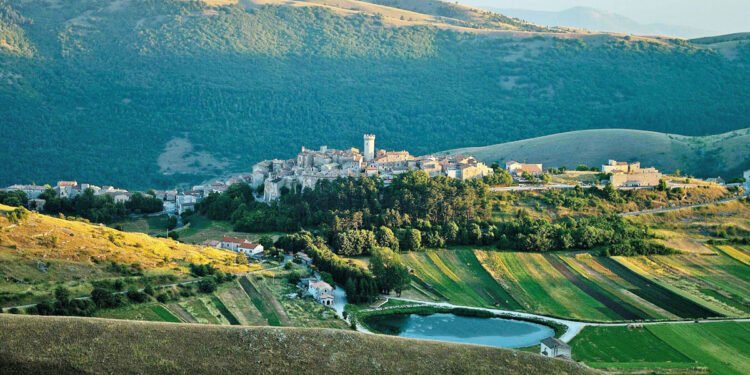A political issue.
Around the end of the Nineties a project began in the village of Santo Stefano di Sessanio and after a few years in the Sassi di Matera as a prototype example of that “lesser” heritage that we wanted to protect.
As for the new transformation of Santo Stefano, choosing to start with a hotel happened a little by chance, but also in order to make sense of private investment.
The project therefore developed on the priority: restoring identity to these places, i.e. a restoration project with specific regulations for this type of heritage, the relationship between historical buildings and the landscape (even if this is the responsibility of local authorities) and finally the development of several aspects of material cultures of the area, ranging from food to domestic crafts.
As for the return on investment, the project – which has room for improvement – has proved to be the main variable of this investment and the premise of its economic sustainability.
In regards to the possible cultural value of Santo Stefano di Sessanio or the heritage status of this type of hilltop village, it’s important to consider that in the literature of nineteenth-century travellers, in those few pages dedicated to the “Abruzzi,” there was never special interest for S. Stefano di Sessanio, despite some occasional foreign visitors. The same can be said for tourism publications of the last century.
S. Stefano di Sessanio began to be considered as a heritage that required to be protected only after the now widespread awareness of the invasive urbanisation that in the last seventy years has created extremely peculiar historical landscapes disappear, in which the architectural heritage was confused with a natural derivation of territory.
In this lesser architecture the historical, architectural and landscape heritage is substantially comparable within the same geographical context and therefore it could be said that the historical, aesthetic and “affective” value of the village and its territory is directly proportional to the absence of contemporary constructions, strongly in dystonia with the original heritage.
The economic return on the territory of this cultural project in Santo Stefano di Sessanio was significant:
From the end of the Nineties, the start date of the project to present day, accommodation businesses have grown from 1 to 23 and likewise, with a less logarithmic but significant trend, there has been an increase in the number of restaurants and a varied assortment of crafts shops.
Although integrity is the only value of Santo Stefano di Sessanio, the model is at risk precisely for specifically political reasons.
The current regulatory situation foresees that the villages will continue to witness, administration after administration, the rise of new buildings disconnected from the public interest and the needs of the inhabitants. Plus, not only for the new buildings aimed at second homes for tourist purposes for which public opinion has been sensitised for some time, but also as a result of the episodic public funding that transits through the area and that is requested by the local authority, the Municipality, with aims of mere welfare, regardless of what the resulting object and purpose will be.
Despite the existence of instruments for protection, the plurality of regulations of the Italian legislative system and the fundamental importance of the Municipality in the urban management of its territory make it very difficult to maintain that unique relationship between the historical buildings and the surrounding territory.
This relationship based on identity has therefore been eroded due to a plurality of invasive urban development policies which, in the last seventy years, have led to a veritable extinction of the Landscapes.
In the iconographic material, even in the artistic field, it is evident how dramatic the loss of what was has been is.
Landscapes that will never be the same again.
This model that is potentially replicable in the internal areas of our South – where there is a strong presence of hilltop villages on the verge of abandonment – is based on the protection of the historical landscape heritage but, given the regulations in place, in the long term also destined to disappear despite the value of its cultural and social economy.
Daniele Kihlgren

